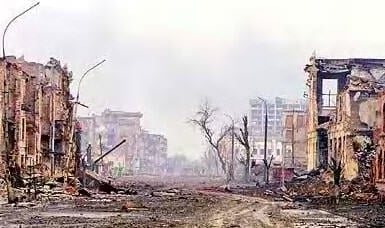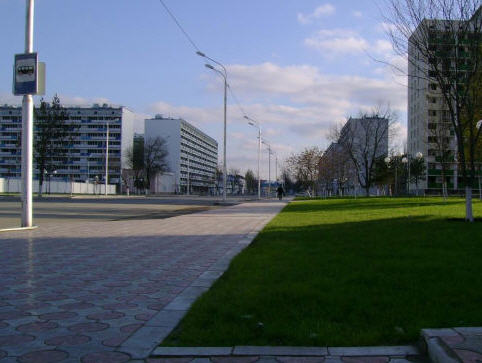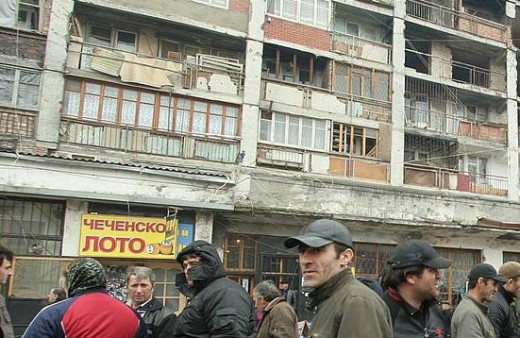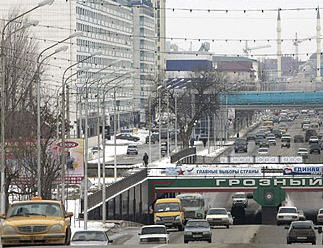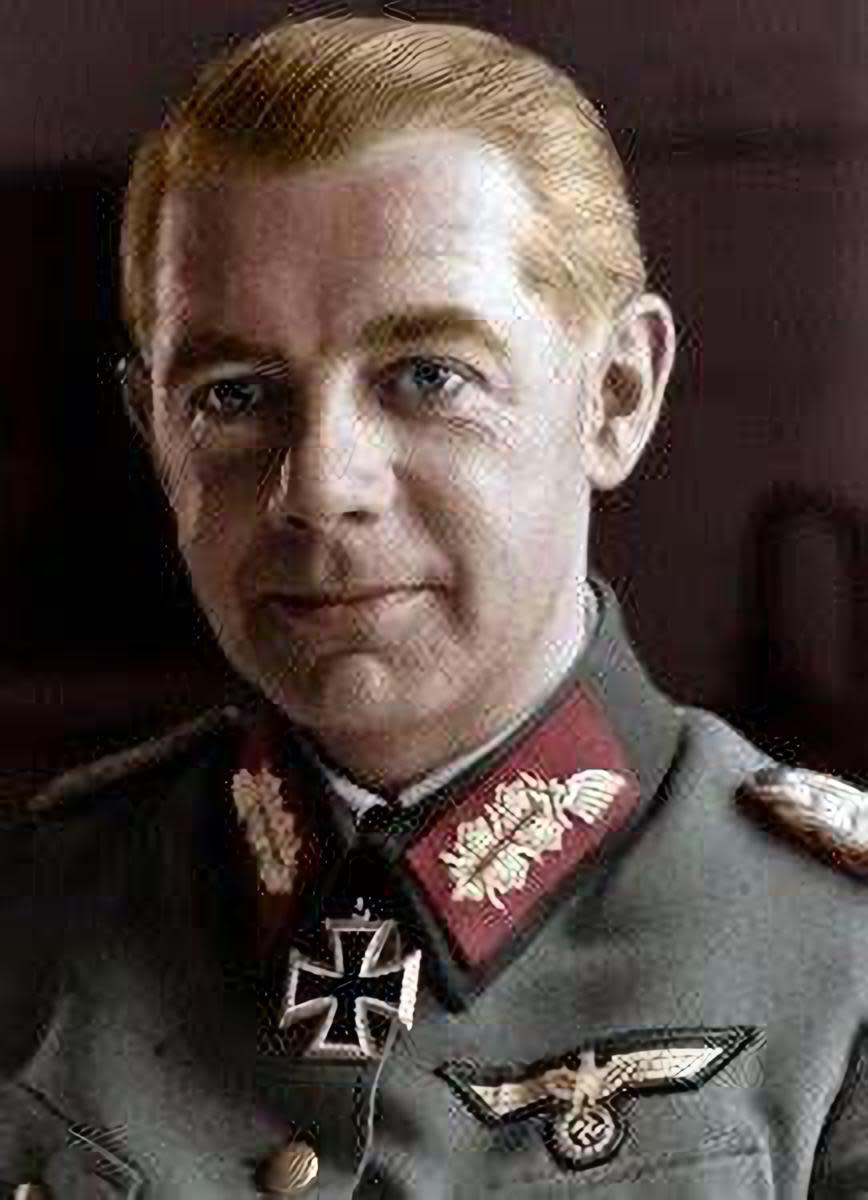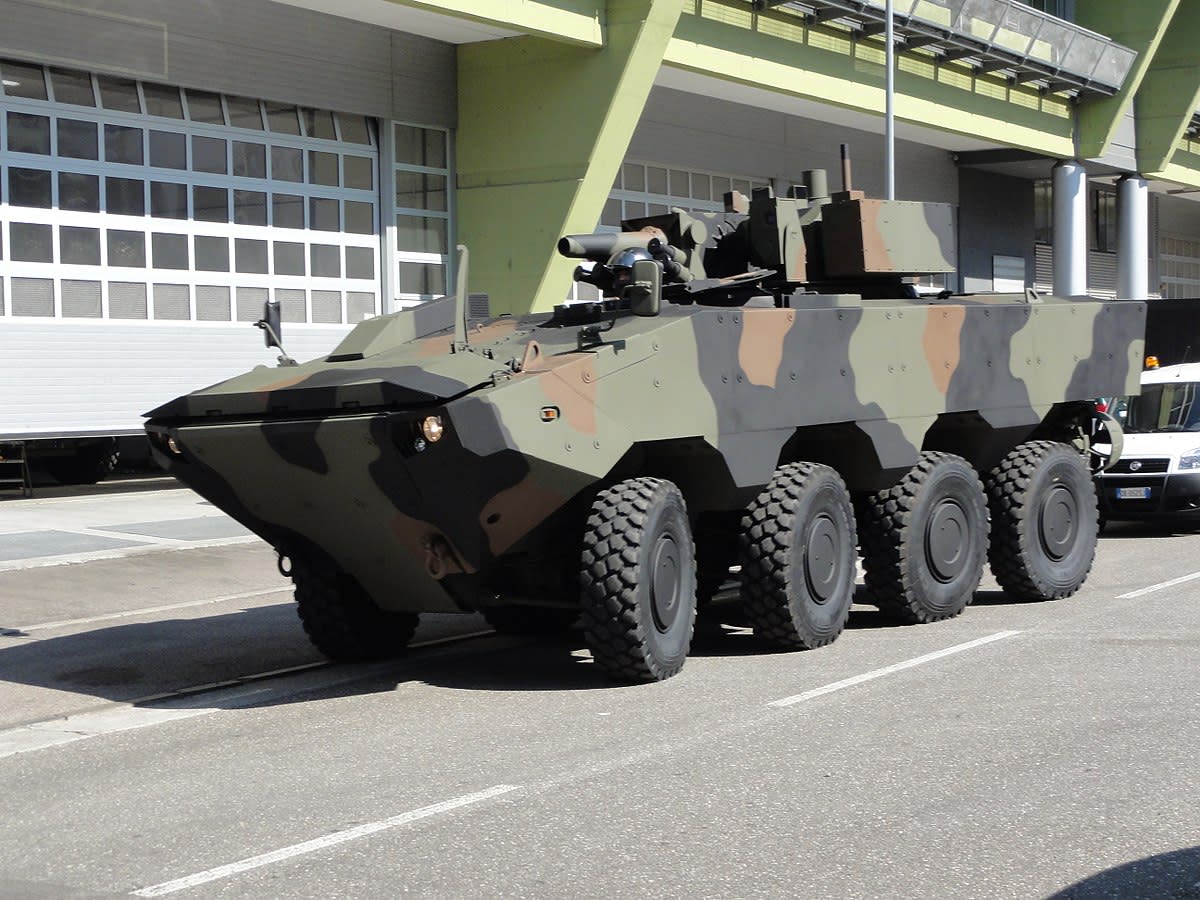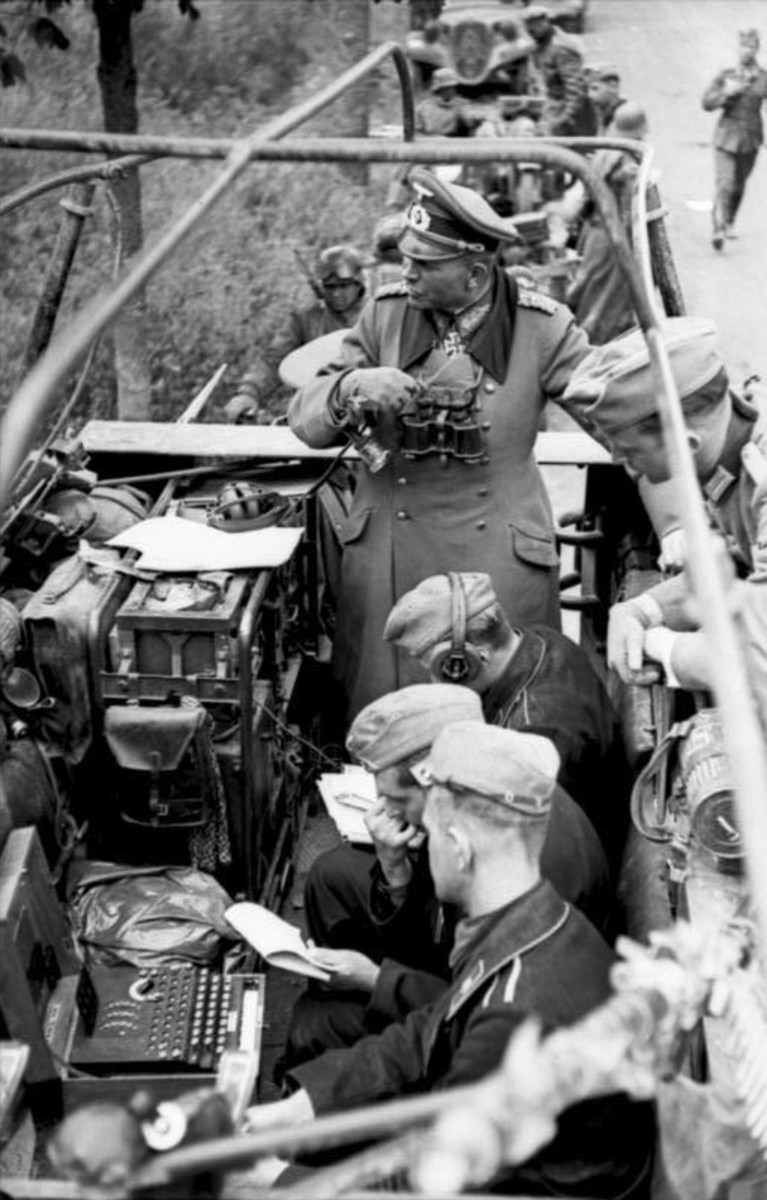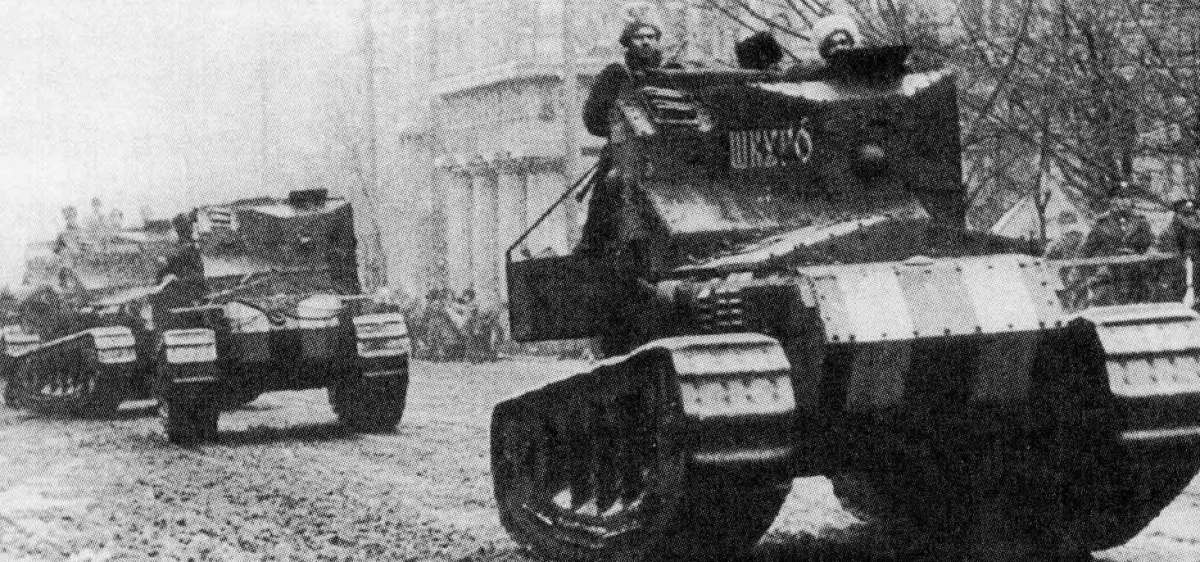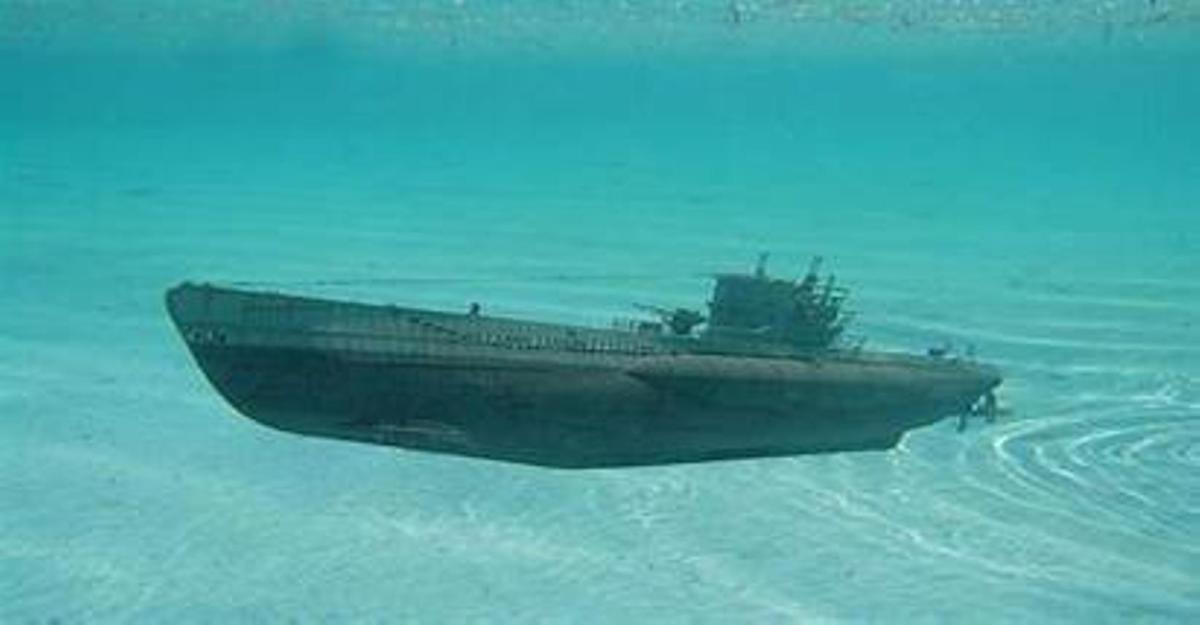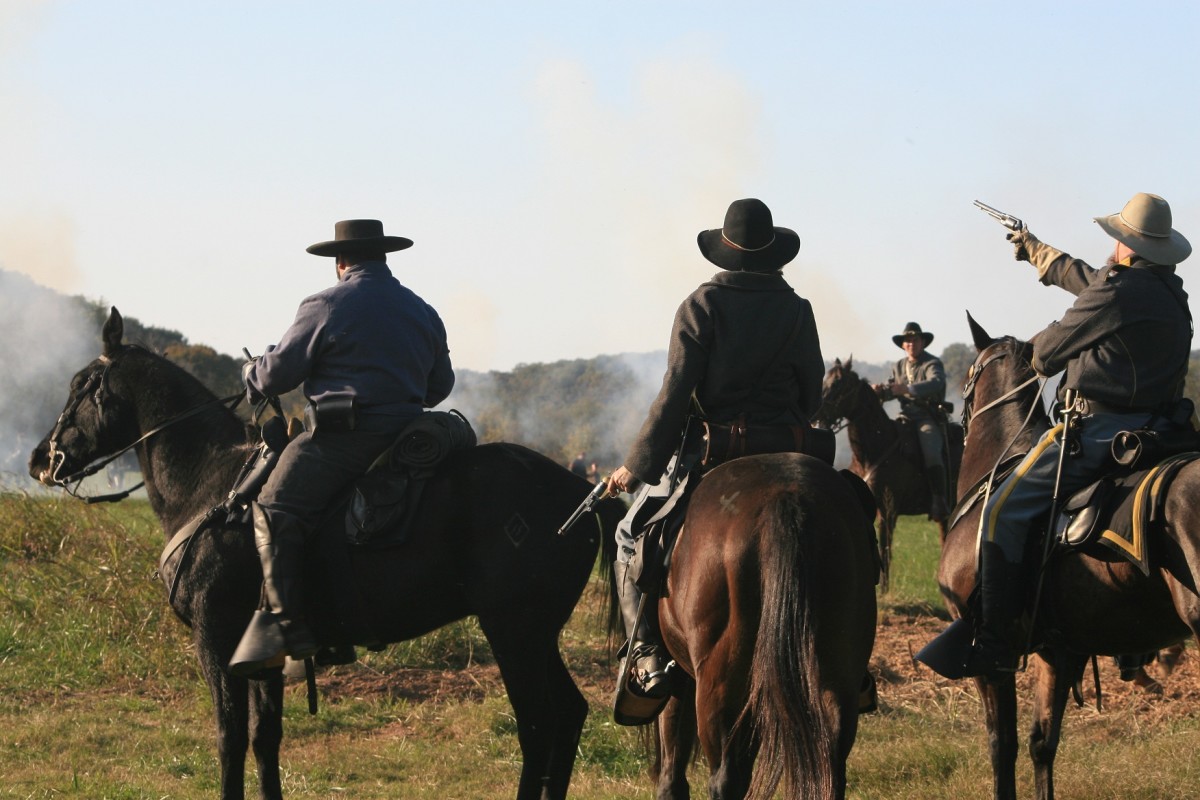Terrorists and the Battle for Grozny: How It Developed
The First Terrorists: Chechen
The separation from Mother Russia had been traumatic. Behind the vale of diplomancy, anger, resentment and bitterness simmered between two parties like a bad divorce. Agreements were made, some were kept, others broken in sporadic spasms of combat in 1993-4. Then, Boris Yeltsin sent Russian troops into the Chechnya (the size of Connecticut) to quell the uprising led by the former Soviet air force commander, Dzhokar Dudayev. The Russian troops were repulsed. In 1996, Yeltsin agreed to a cease fire that gave the Chechens what they had longed for: independence from Moscow and Russia. The surge of separatist movements had been eroding Russia’s southern flank one by one. It seemed that this plaque had to be stoppd. Of course, Chechnya had always sought independence since 1818, when the Russians first entered and conquered it. For 25 years, a pro- Islamic state fought the Russian army until 1864.
This was old news, today it is fought with new vitality and weapons. After the cease fire, chaos gripped the province since the Russians had withdrawn many of its troops. This allowed the Arab Islamic extremists to enter and take hold to some extent, winning over the local warlords with the lure of money, arms and fighters. The money Moscow had promised and provided to rebuild the devastated area was largly stolen through corrupt politicians or bureaucrats in Moscow and Grozny. Chechnya’s new president, Aslan Maskhadov also fell to pressure and introduced Islamic law.
Dagestan (adjacent to Chechnya) in 1999 was invaded or occupied, this time by Chechen separatists led by warlord Shamil Basayev and other Islamic extremists. In September, Chechen’s blew up an apartment complex in Moscow, killing 300 people.
The hard line stance of Vladimir Putin, now president, appealed to the majority of Russians and vowed to crush them. Russian troops were sent into Chechnya in larger numbers and able to control the province but totally unable to eliminate the Chechen groups who operate from the North Caucasus Mountains.
Most recently (2004), two airliners were exploded in mid-air by two Chechen women armed with explosives.
The Chechens are wolves and Chechnya is their territory. Grozny is their den, their home. This divorce remains over property and independence.
Chechnya History 101
The Republic of the North Caucasus, which included Chechnya, was formed after May 1918. The new republic fought against the White Army commanded by General Denikin. Chechens from the mountainous areas fought the Tsarist forces, while other Chechens from elsewhere fought on the side of the Tsarist Army. When the Whites were defeated in 1920, the Red Army entered Chechnya. This time, the Chechens rebelled against the Reds. This revolt ended in the Fall of 1921.
In World War II, with the creation of the rebel government led by Israilov and Sheripov, the Chechens conducted guerrilla warfare. It was in June 1942, this rebel government appealed to the locals to welcome the Germans as guests. The government informed the Germans that they would be well received if the Germans acknowledged the independence of the ChechenRepublic. When Stalin caught wind of this, Red forces flooded into the area as an act of prevention deporting sympathisers.
In 1991, the retired Air Force General Dzhokhar Dudayev seized power via questioanable election results as the supreme authority of the Republic of Chechnya. He quickly created a "Chechen army" using the stockpiles of Russian equipment . Russian authorities in Moscow did little hoping this whole issue would simply fade away. President Yeltsin then demanded that the national guard disbanded and buildings seized freed , as it was illegal. Instead, Dudayev severed all ties with Moscow instead. On November 7th, Yeltsin declared a “state of emergency” in Chechnya.
In the Spring of 1994, Islamabad (Pakistan) had become directly involved in the support for the Chechen Jihad. The Taliban offensive had threatened the flow of Heroin from Afghanistan, which financed the Chechen revolt. The Pakistani ISI (Intelligence Service) intervened to ensure the continued flow of drugs. Pakistan training camps at Khwost began training 300 guerrilla fighters for Chechnya. Moreover, a few top notch trainees went to the advance camp at Markaz-i-Dawar. The Chechen leader, Basayev was trained there in July. Later, Basayev met the highest ranking Pakistani military and intelligence officers.
It was Basayev that led the assault against Russian federal troops in the first Chechen war in 1995. His organization had also developed extensive links to criminal syndicates in Moscow as well as ties to Albanian organized crime.
By late 1994, trained guerillas were being sent to Chechnya in mixed detachments made of recently trained Chechens and veteran Pakistanis who fought with the Mujahedin in Afghanistan. Large quantities of weapons and ammunition were being sent. In addition, soldiers from the Afghan Mujahedinbattalion stationed in Pakistan were sent to Chechnya in late 1994. These units (many led by Pakistanis) saw combat between Dec 28, 1994 and January 10, 1995.
In 1994, Grozny had 490,000 inhabitants, some 90 square miles including the suburbs. Grozny has four sectors created by the SunzhaRiver, which runs from the northeast to the southwest, and a railroad line running from the southwest to the center of the city and eastward. The city has a mixture of concrete buildings ranging from 3- to 15-story structures and 123 roads led in and out of Grozny. Pictures of pre-war Grozny show a spacious, modern and green city. Numerous parks, the river, and mild weather made the city one of Soviet Russia’s nicer, warmer cities to visit. Today, Grozny is terrible. An alien wasteland of a destroyed concrete jungle.
Like people, nations have a problem with change. The new Russian Federation was no different for it still contained many of the old Soviets in it. The government may have changed but the military was still Soviet. Thus, the planners who conceived the operation to “retake the runaway Republic” relied on old Soviet operations that were proven to work. In essence, the plan was a Prague-type operation, or like that in Moscow in 1991.
Simply put, it would be a show of force or demonstration using the might of the Russian military. Russian troops hastily slapped together into brigades and divisions would enter Grozny at key points and park (show of force). This “indirect force” it was hoped would create
political pressure so the government would collapse. Massive armored formations would go into the heart of the city and crush any resistance in a dramatic show of force. Well, after all, it had worked numerous times before. This time, the Russians were facing wolves, and a very nasty, determined lot they were.
Had the Russians looked further back in history, to late November, 1916, they would see that a show of force against a determined foe does not work. The Battle of Athens lasted two days. Briefly, the Allied nations demanded from Greece, hundreds of artillery guns for use along the Macedonian Front. For weeks, the Greeks refused to turn over the material or join the Allies in WW1. The French, angry, landed over 3000 Marines near Athens and marched to Athens in a show of force. The French assumed the little Greeks would crumble and give in. As the French approached, the Greeks opened fire totally startling the French commander, who had not even thought that the Greeks would fight them. Battle broke out, naval ships bombarded Athens. Deaths occurred, but after two days a truce ensued and the French withdrew and only death to show for it. It was a great embarrassment.
The battle of Grozny can be divided into three separate parts: from December 31-January 3 (the wolves rip the Russians apart), from January 4-17th (the Russians recover their balance and capture the Presidential Palace objective and northern parts of the city), and from January 17 to February 8 (Russian forces hammer the Grozny area while the wolves melt away into the villages and hills).
As to weapons, according to estimates made by the North Caucasian Military District, Russia left in the city of Grozny 108 armored vehicles: 42 T-62 and T-72 tanks, 36 BMP-1 and BMP-2 APC’s, 30 BTR-70 APC’s and BRDM-2. The military left 590 modern anti-tank weapons, which played, as subsequent events showed, an important role in destroying the armored vehicles of the Russian Army in Grozny.
For example, among the weapons left were two ATGM systems "Konkurs", 24 ATGM systems "Fagot", 51 ATGM systems "Metis", and 113 rocket launchers (RPG-7). This is only the documented list of combat equipment left behind in 1992-3. It is not complete. The inflow of ammunition and armaments into this region was continuous and uncontrollable by Russian authorities. Plenty of weapons and combat materiel was delivered by the Russian Special Services to the forces of Chechen opposition groups fighting against President Dudayev of ChechenRepublic.
Many of the Russian soldiers were new draftees with little training. Some units were not combat trained (one unit had been performing snow removal tasks on December 14 and two weeks later it was fighting in Grozny). Instead of sending the best troops (just in case) untried, green units were sent. On the day of the initial assault into Grozny only the Northern force achieved any success. The new soldiers received $28 per day, combat pay was an extra amount and only for time when the man was actually in combat.
The Military Forces
Russian
The Western force comprised of the 19th Motorized Rifle Division and elements of the 76th and 106th Paratroop Divisions. These had already been delayed by fierce resistance in the western suburbs. This force was to take the center of Grozny. It eventually made it to the city center later the next day but the initial assault was over by then.
The Eastern force comprised of the 104th Parachute Division (whose Commander refused to commit most of his unit in the upcoming attack due to inadequate preparations) and the 129th Regiment ( 20-25 T-80 tanks, 5 ZSU AA, 10 BMP-2), also had encountered stiff resistance east of the city. That resistance prevented the eastern force from meeting the western forces (as originally planned) at the southern railroad bridge crossing the SunzhaRiver.
The North/Northeast Group consisted of the 81st Regiment\20th Division (six 120 SP Arty, 73 BTR-70, 1100 men in three battalions), 131st Independent “Maikop”Regiment (26 T-72\T-80 tanks, 60 BMP-2, four BDRM-2, 1200 men in two infantry battalions, one tank battalion) and six ZSU AA. One regiment was to seize the rail station and the other the Presidential Palace area.
The total force seemed overwhelmingly strong: 25,000-38,000 men, 80-230 tanks, 200-353 APC’s, 180-388 artillery tubes and the 4th Air Army. Actual numbers vary because sources vary.
It must be noted that the Russian force was poorly trained. General Gromov, commander of the Soviet Union's 40th Army in Afghanistan, noted:
“The troops taking part in the combat operations had not been prepared for this either morally or physically or professionally. The armed forces are not distinguished today by a high degree of training or personnel and they lack a sufficient quantity of equipment that is in good working order and combat-ready, communication and control facilities, technical and rear support, and so forth. All this condemned the military campaign in Chechnya in advance to big casualties on both sides”.
It is necessary to point out that the units participating in the combat operations were simply not prepared for them. On the average, 2 out of 10 tanks failed to reach Grozny because of various malfunctions.
The use of armored vehicles in Grozny proved to be a mistake for the most part. It is clear that the tanks, BMP vehicles and APCs used were not designed for operating in cities or mountains. Their use for such purposes requires both special additional accessories and special crew training. None of this had been done. At the same time, it is also clear that a majority of equipment and personnel involved in their use were not trained for combat operations in an urban environment.
Chechen
The total number appears to be around 5,000, of which only 800+ were in organized military type units. Some books note up to 10,000, which is simply untrue.
The two battalions, the Abkhaz and the Muslims, appeared to have made up the core of Dudayev's Chechen National Guard. The remaining fighters were mostly civilian volunteers, to take up the historic resistance against another Russian invasion of their Republic. Some accounts claim that the Abkhaz Battalion contained 2,000 men, 34 T-72 tanks dug in hull down positions, 30 mobile rocket launchers. Further, the center area contained the Borz Detachment (60 men, two T-72, one D-30 122mm gun), the Grom Battalion (200 men), the Presidential Guards (300 men, four tanks, two SP Artillery) and a Police Detachment (300 men, 12 tanks). It is not clear if these detachments were part of either the Abkhaz or Muslim Battalions.
The Chechens operated in groups from three to twenty or more men usually fought in the area they lived but like wolves, went to sound of battle, wherever it was. The Chechens had large caches of weapons and ammunition stored near Grozny. When the republic first left the Russian Federation in 1992, the Russians left behind large quantities of weaponry in Chechnya. They had over 150,000 RPG warheads. Most accounts tend to agree that Chechen squads of 10 men contained AK47s, 2 RPG-7, 1 LMG and 2 Snipers. A Company size unit might have 80-100 men, 2 tanks and 60 RPG-7. The Chechens used a lot of snipers from high rise buildings. Numerous accounts exist stating that one or two snipers did hold up a whole Russian battalion. There were also numerous 1-2 man teams armed with RPG-7s.
Some Chechen commanders had only 85-125 men with 2 RPG-7s defending a district of Grozny that extended a kilometer. The common methods of warfare used were similar to what the US faced in Vietnam, that is, fire at the enemy everywhere without being seen anywhere. The Russians did not know where and who the enemy was. Chechens shot, destroyed, withdrew, went home to sleep, returned to start combat again. There was little organization or planning, but many independent hunters roving around like packs of wolves.
Shamil Basayev led the Abkhaz battalion, the unit that destroyed most of the Russian forces in Grozny in this battle. Basayev was a veteran as was the men under him. The unit was in combat a few years earlier, in the Republic of Abkhaz, west of Chechnya. The Muslim unit had prior combat experience also and together formed the Chechen fighters around the Presidential Palace and at the Railway Station.
Russian military leaders did not comprehend the mentality of the individual Chechen fighter and grossly underestimated their military preparedness. They committed their forces into an unknown situation. Intelligence was sketchy at best.
The Chechen plan of defense was no defense. However, the Russians seemed to had not learned any lessons in Afghanistan concerning guerrilla warfare and instead, turned to the old Soviet presumptions concerning its enemy. The Russians presumed the Chechen defenses comprised of three concentric rings protecting the Presidential Palace (depending on the source, their remains a debate as to whether they existed). These rings were thought to be positioned at certain distances and each one tougher to crack. This was old thinking in a conventional army. The Russians thought the inner ring centered on the Presidential Palace with a radius of .5 to 1.5 kilometers ( held by 2000 men, 34 tanks\APCs) with key streets containing 80 to 100 men armed with 60 RPG-7s. The next ring was thought to be about one kilometer from the central ring in the north and northwest and up to 5 kilometers south of the center ring. Lastly, the outer ring was the perimeter of the city limits and in the suburbs.
In reality, the defense rings were not there at all (some Chechen commanders claim this). According to some Chechen commanders, no defense plan existed. Instead, the plan was "off the cuff." Based upon the circumstances and events. It was wait and see, then plan. The Russians did have the element of surprise on December 31, as the Chechens had only a few barricades or fighters ready to greet the Russian force moving into the city that morning.
Chechen commanders had a great deal of autonomy. Mobile groups of 10-12 men operated independently. Since there were no defense lines (except close to the Presidential Palace) these groups were always moving conducting hit and run raids. Their communications were good using Japanese portable phones via satellite and they frequently intercepted Russian communications. The Chechens frequently knew what the Russian plan was. Their only weakness was their inability to coordinate Chechen regular forces with local militias. It was not uncommon for seventy men to pass by Russians only 30-40 meters away in an urban environment. This was especially true at night, when the Russian soldiers stayed in their secured areas.
The Chechens had a fixed method for conducting ambushes. This method crippled and then destroyed the column. The technique was based on the 25-man group, composed of three mobile squads of two heavy machine gunners, two RPG gunners, one sniper, and three riflemen. Three of these 25-man groups (supported by an 82mm-mortar crew with two tubes) would conduct an ambush. Three of the eight-man squads were "killer teams" and set up in key positions along the ambush route. The killer teams were a product of the Syrian army during the 1973 war.
These teams had an antitank gunner (normally armed with the RPG-7 or RPG-18 ), a machine gunner and a sniper. Chechen combat groups deployed these cells as anti-armor hunter-killer teams. Its machine gun and sniper would pin down the Russian infantry supporting the AFVs while simulataneously the RPG man fired at the AFV’s top, side or rear. These cells were always deployed in larger groups and at basement, ground, first and second story levels. Sometimes as many as six such AT hunter teams focused on a single AFV.
Chechens also used the Molotov cocktail filled with gas or combustible jelly. Due to the very limited depression/elevation range, Russian tank barrels were incapable of dealing with hunter-killer teams fighting below ground level or higher than first story positions. The tanks' machine guns were also quite ineffective in this environment. The Russians did attach ZSU 23-4 antiaircraft guns to armored columns. This also proved to be ineffective due to their thin armor.
Chechens would occupy the lower level of buildings in the ambush zone to prevent being wounded by incoming artillery, and fire at the first and last vehicles. The vehicles in the middle were trapped unable to maneuver. The remaining fifty men would occupy blocking positions to ensure the entrapped Russians could not escape and to prevent reinforcements from entering the ambush area. The whole column would suffer from heavy attacks using RPG-7s. In an effort to make safe the column’s approach, Russian artillery fire would barrage the planned route in an attempt to reduce multi-story buildings to rubble. However, they would never barrage closer than 200-300 yards of Russian troops. Besides, the rubble created even more obstacles for the AFVs to overcome and defensive positions for the wolves.
Welcome to Hell
The Battle for Grozny actually began on December 28, 1994, with the Russians easily taking the southern suburbs using the 81st Samara Regiment 10 km NE of Grozny’s center. By the 30th, the Russians felt quite confident about what they were facing and how to deal with it. This false sense of overconfidence prompted the army commanders to decide to conduct the full assault. It was no secret, as Commander Grachev announced it at a news conference. However, the date was. That date was the next day! The plan envisioned a quick strike and kill towards the PresidentalPalace to liquidate President Dudayev. It was expected that when this occurred, resistance would crumble! Units were quickly notified and few preparations were made. Many of the officers of companies or battalions had no city map of Grozny. To support, five SU-24M ground attack squadrons were created, in addition to usual artillery barrages.
The original Russian plan is was to be air-mobile. Paratroops would be inserted in the center of town and on top of key buildings along the advance routes. The armored forces would then assault through the rebel positions and link up with the paratrooper's positions. Someone in the upper echelons had neglected to inform both the airborne troops and the helicopter units of this plan!.
The race was on.
December 31st, 1994
Confusion reigned during the initial stages of the operation. The air support was unable to be provided due to bad weather. Military leaders refused to obey orders in protest to an operation they considered totally unprepared. Units deployed without adequate training and supplies. One Russian general described the lack of preparation as criminal. The troops that deployed to the region were young, poorly led conscripted soldiers. The three-pronged assault into Grozny’s heart relied primarily on two units from the Northern assault group, the 131st and the 81st Regiments. The other forces in the assault did not directly influence the fighting inside the city. Russian artillery shells falling into the city of Grozny fell at a rate of 15-20 per minute!
Upon entering the city limits at 9 A.M., a reconnaissance element from the 131st made contact with a Chechen defensive position. The Chechen defense forced the Russian main body to bypass it to the south. Then, the 131st received orders to seize the Railway Station (the original orders were to take the central market area) when the Western assault group reported they were unable to enter the city. The boldness of the Russian armored drive into the city surprised the Chechens and they reacted cautiously. The Chechens did not expect the Russians to attack the city center until after the holiday..
The 131st Regiment’s (only one battalion and a tank company entered. The balance remained on the outskirts of Grozny) stroll through the Grozny streets in the early hours were deceptive. Except of occasional resistance, the unit entered the city in a near parade-like fashion. Troops were on top of APCs waving to the locals. Once the 131st had taken the railstation, it was to prepare for the assault on the Presidential Palace from the west.
The 81st Regiment did not have it so easy. They almost immediately encountered resistance as they slowly advanced directly towards the Palace. The deeper they got, the more the wolves bit. Soon, several packs of wolves had surrounded the unit firing from below, above and from the flanks. Some of the tanks managed to advance to the palace but fell prey to fierce AT fire. The infantry only managed to crawl to within 3-4 blocks of the palace.
Russian unit cohesion quickly disintegrated and the battle became a matter of individual vehicle and crewmember survival. One Chechen commented:
"The armored columns,. .were most often stopped by knocking out the first and last armored vehicles. Afterwards, the combat vehicles stuck in the middle were fired at from the surrounding buildings, knocked out, and set on fire. Those (vehicles) unable to break out from the columns then began breaking into the adjoining concrete buildings by smashing through them in reverse..
But the major portion of the armored vehicles were either knocked out immediately or forced to fight while encircled and without any hope of breaking out."
Without Russian dismounted infantry to provide close cover, Russian armored vehicles were exposed to close assault The Chechens hunted down individual armored vehicles and destroyed them at very close range. By nightfall, over seventy armored vehicles of the 81st had been destroyed and 500+ men were killed in action. One survivor recalls only one out of thirty BTR-80s returning from a battalion of the 81st .
One Russian soldier who survived the ordeal was Vyacheslav Mironov. He was able to write about it later in his book, Assault on Downtown Grozny:
“When our brigade fought its way through heavy rebel defenses to help them, our tanks had to struggle through barricades of corpses of our Slavic brothers. When you see how tracks chop and hummer human flesh, how heavy leading wheels coil intestines of people just like yourself... When heads pop open with a crunch under a steel caterpillar and all around it is sprayed with a grey and red mass of brain. Brain of a maybe unaccomplished genius, poet, scientist or just good lad, father, brother, son, friend who didn't chicken out and came here in this shit hole of a place called Chechnya and, may be, to his last moment, didn't even realized what the hell happened to him. When your boots slip on the bloody mucus, then the important thing is to think of nothing, and concentrate on only one objective: survive, survive and save your men. Because those you'd lose will come to you in your dreams.”
The eastern attacking force began to advance at 1100 hrs towards the city. This force consisted of the 129th regiment, a tank battalion of 20-25 tanks, five ZSU AA guns, three D-30 122mm howitzers, 10 BMP-2 carrying paratroopers. When the column reached the railroad bridge over the Sunzha it came under a hail of fire from the Chechens. The thin armord APCs lit up quickly. The column continued and turned right by mistake and at 1600 hrs was at the Rodina movie theatre and again met with heavy fire. There, the force huddled to fend of the wolves until morning. Morning (Jan. 1) was worse as the SU 24 strike bombers continuously bombed them (the Russians) between 0900 and 1000 hrs! Additional vehicles were destroyed from friendly fire. The unit had had enough and retreated to Chankala airport, reaching it by 1400 hrs. The regiment had lost 150 men.
Attacking from the west was the 19th Division. Its lead regiment was unable to penetrate the city’s outskirts due to Chechen resistance. The struggle on the 31st continued until elements broke through around midnight allowing the units to reach with 300 yards of the Presidential Palace. Other units in the group veered off course towards LeninPark, still others remained pinned (elements of the 76th and 106th Paratroop Divisions). From there, the group’s attack simply went nowhere and the units fell back.
Returning to the 131st Regiment, they arrived and easily took their objective. The soldiers casually occupied the area and building without much care or precaution. They all thought they would be going home soon. Troops do what idle troops do, some drank, some relaxed, others milled around. For the next two hours, things were fairly routine and calm. A calm before the storm.
Initially the Chechens were confused and unsure of how to respond. But by 3 P.M. they responded in full force and attacked both columns. The Chechens attacked the 131st at the railway station. Automatic weapons and rockets saturated in from all directions. One soldier said it was as if an atomic bomb went off around the station. By 3:30 the 131st had lost 13 armored vehicles . The Brigade Commander, Col. Ivan Savin although wounded in both legs, organized a defense inside the rail station. For the rest of the night, fighting continued. The 131st was surrounded and struggling for its life.
A 38-year-old Chechen guerrilla's description of the Russian assault into Grozny on December 31 provides an example of the individual Chechen fighter's emotions.
"It's better for us in the dark and in the city. Here, they're our guests and we're the hosts. They have come in, but they won't leave.. .They're not fighting for anything, but we're fighting for our homeland - we're not afraid to die. They have planes and tanks and all we have is Allah and the RPG. But we know what we're fighting for."
January 1st, 1995
Savin, knowing all too well of the horrific outcome, ordered his assistant commander, Col Andrijevski, to organize a relief using remainder of the brigade (on the outskirts of the city) to attempt a breakthrough to the rest of the brigade. At 0600 hrs, led forty armored vehicles towards the rail station. The Chechens forced the relief force to divert away from their intended route and instead approach the rail station from the next block over. By 1100 hrs, the lead vehicles were within a few hundred yards and then bam! The Chechens ambushed the relief force and surgically decapitated the column. One soldier tossed aside minus one leg went into a frenzy spraying bullets in all directions.
According to the participants in the battle, a grenade launcher antitank shell knocked out the column's command vehicle and the column lost any effective command. The tank immediately lit up like a torch. Each of the group's armored personnel carriers was then pierced by at least five antitank grenades. Only two tanks were able to break out, hiding in an abandoned building. Another APC rapidly accelerated down the street to escape the deluge failed to stop and sank in the SunzhaRiver. The rest kept burning and crashing in to each other in the confusion. It was total chaos and panic, the streets painted with blood. The Chechens had lost around 40 men.
Part of the reason for the Chechen success is further explained by Vyacheslav Mironov:
“One paradox was that all army units, regardless of the kind, have been using the same radio frequencies and call signs that they did when they came into Grozny. All of which meant that if you try to scan the radio traffic within the range of 3 to 30 MHz, during the day, you could easily find out where each unit is located and what exactly it is doing there. Moreover you would know the names of the unit's leader, radio operator and all sorts of other useful and not so useful information. By the way, our opponents (Chechens) were not much smarter, keeping their frequencies and call signs unchanged for weeks at a time. Well, we kind of, matched each other over there. Services of the radio traffic interception and disinformation of both sides were on top at all times. However, Chechens had one unquestionable advantage - they could speak Russian and therefore deceive us; we, on the other hand, could not speak Chechen and thus were helpless trying to fool them.
One example would be the Train Station assault. Back then, "spooks" fooled our neighboring artillery regiment, and the lads, thinking they had spoken to us, for about 30 minutes, were thoroughly shelling us! Unfortunately these cases were not unique. With time, through the system of codes and passwords, we slowly stopped walking into Chechen traps. “
When this failed, another attempt was made by elements of the 19th Division. This, too, totally failed as the brigade's soldiers lost their way and headed deeper into the city towards the Presidential Palace!
One Russian commented: "I'm really impressed by the Chechen fighters. They've got so many guns but you don't see them fooling around with them, showing off.. .They're really serious soldiers."
At 1500 hrs, Savin asked and received permission to flee to LeninPark, on the other side of the city! As Savin gathered up his 75 remaining wounded soldiers, another relief attempt by elements of the 106th and 76th Paratroop Division attempted to rescue Savin at 1530 hrs. This last ditch attempt also failed.
Savin’s bold breakout was doomed from the start. With no maps, the men broke out and immediately began to lose their way. Some reached a nearby rail station, others made it to the Rodina Farm, still others, ended up near the Presidential Palace. The wolves pursued and attacked savagely using snipers and automatic weapons. They had become the hunter had become the hunted. It was every man for himself. All 75 men and their commanders were killed. The 131st had ceased to exist within 24 hours of its arrival.
The Chechens killed Col. Savin near the Palace and captured seventy others.
Within twenty-four hours, the 131st Regiment had ceased to exist. Survivors from the unit say over 1,000 died in Grozny.A modern “Custer’s Last Stand”. Two Russian Regiments deployed into an urban environment with modern vehicles and equipment. These faced a smaller, unarmored Chechen infantry force organized into two battalions totaling approximately eight hundred men (by some accounts, these would be the hard-core Chechen guards).
After 24 hours of combat the Russian forces sent into the city ceased to exist and the Chechens suffered minimal losses and retained control of the center of the city.
In the end, from Dec 31 to January 2, a horrific city battle had occurred. According to Russian sources, 534 Russian soldiers were killed and 200 armor units knocked out. If you ask the Chechens, they claim some 800-1000 Russians were killed and 81 taken as POW’s. There is no accurate count for Chechen losses.
The dead bodies littered the streets and provided targets for plunderers and food for roaming wild dogs until January 23rd, when the Russians finally controlled terrible Grozny and the bodies were picked up.
From December 1994 to February 1995, the Russian Armed Forces claimed to had killed 6690 soldiers, destroyed 64 tanks (14 more tanks were captured), 71 BMP vehicles (61 more BMP vehicles and APCs were captured), 108 artillery pieces (45 more were captured) and 16 "Grad" rocket artillery launchers.
Russia’s Heavy Metal
Although the Russian Federation forces were shredded by the wolves in their first bid to seize the den in Grozny. Russia did use to good effect a few new weapons. Both of the weapons were advancements of a system first developed in Afghanistan in the 1980’s. Both very deadly when used. However, because there were few of these weapons available, their impact was minimal.
Fuel-air weapons work by detonating a scattering charge within a bomb, rocket or grenade warhead. The warhead composed of either volatile gases, liquids or finely powdered explosives, form an aerosol cloud. This cloud is ignited causing a fireball that fries the surrounding area as it consumes the oxygen. Once the oxygen is consumed, an enormous overpressure blankets the area. In microseconds, the pressure at the center of the explosion reachs 427 pounds per square inch! To understand this, the normal atmospheric pressure at sea level is 14.7 pounds per square inch. Temperatures soar to above 4000 F. Living things under the cloud are crushed and the blast outside the cloud area travels at 9843 feet per second. This sudden vacuum pulls in loose objects to fill the void. Thus,a fuel-air explosive is like a tactical nuclear weapon without lingering radiation. Since a fuel-air mixture flows and fills all cavities, neither natural terrain features nor emplacements, covered slit trenches, or bunkers can protect its occupants.
The "Buratino" (TOS-1)was one of two thermobaric systems used by the Russians in Grozny. It was first used in Afghanistan's Panjshir valley in the early 1980s (the author has a DTP game on this unique battle). The Buratino fires 30 220 mm rockets in one salvo launching from a mounted box fastened to a T-72 tank chassis (the turret is removed). The range of the observed system is 3.5-5 km. The minimum range to a target is 400 yards. The rockets can be incendiary or thermobaric and a salvo destroys a 200 x 400 yards area. This thermobaric warhead is filled with a combustible liquid and with powdered tetranite.When the warhead explodes, the liquid is vaporized creating an aerosol cloud, which mixes with oxygen, detonating, creating a high temperature cloud of flame followed by a crushing overpressure.
The RPO-A Schmel(Bumblebee) was also used in the battle for Grozny. Also from Afghanistan, the RPO-A flamethrower is a shoulder-fired, single-shot, disposable weapon with a maximum range of 1,000 yards (maximum effective range is 600 yards) its minimum range to the target is 20 yards. It has three types of projectiles: thermobaric (RPO-A), incendiary (RPO-Z) and smoke (RPO-D). It weighs (24.25 pounds). A Schmel's zone of destruction is 50 square yards in open areas and 80 cubic yards inside a building.
The RPO-A in Grozny was used as a bunker buster. It's two-kilogram warhead readily destroyed bunkers and strong points. It would usually damaged armored vehicles but the crew would survive. The weapon was not very effective when directed at troops in the open. When used, the tstrike is very bloody. Men caught directly under the aerosol cloud will die from the flame or overpressure, all others, the injuries are burns, broken bones, contusions from flying debris and blindness.
The Use of Tanks
The Russians knew and were quickly reminded that the use of T-72 or T-80 tanks in an urban setting usually met with a tank’s destruction.
As for T-72 and T-80 tanks, most were not equipped with special explosive plates for protection against hollow charges. This was caused primarily by lack of time and an absence of money for an adequate preparation! Many tanks had counter-HEAT plates installed but in an unprepared condition (that is, they were not filled with explosives).
The Chechens would use mostly hollow-charge anti-tank weapons (rockets and ATGMs) at close range towards the most favorable angles. The most vulnerable parts of the tanks turned out to be the armor side plates, rear plate, hull roof plate, technical accessories, and rear part of the turret. There were numerous incidents of destruction of armor side plates of the combat vehicles by firing from the bottom up. After the battle it was clear that Chechen AT fire was applied simultaneously from basements and semi-basements from the ground level, from the ground floors of buildings, and from higher floors. Tanks and APC’s proved to be a weak asset in the city. The density of anti-tank fire during the street fighting in Grozny was 6 to 7 weapons per tank, BMP, or APC.
After the battle, in the hull of each knocked out tank or BMP there were numerous punctures (on the average, 3 to 6 holes) each bad enough to put it out of operation.
Oddly, it was the T72 that had the best ability to survive!. The T-80 suffered from the ammunition load exploding in several cases when a side of the hull was hit . In the T-72, the shells in the conveyor lie horizontally, therefore, there were fewer cases of detonation of the ammunition load when hit from the hull side..
As to the New Year's assault of Grozny, it became simply a massacre of Russian tanks and BMP vehicles. After the artillery preparation, obstructions were created in the narrow streets. The columns of armor stretched out in the streets were deprived of manuverability, they were engaged by fire directly from buildings on both sides of the streets, from all directions. The Chechen tanks and BMP vehicles were dug in with only the turret showing (Hull Down), in the most threatened sectors making several direct hits as the column advanced..
Thus, the bulk of armored vehicles advancing into the city center through secondary thoroughfares were knocked out at once or were forced to conduct a defense while being encircled for a brief time. Along the main thoroughfares, when the tanks and BMP vehicles broke through to the city center they were without infantry support and destroyed by anti-tank rocket launcher fire.
The Chechen “Fuga” Developed by the Abkhaz battalion to be used when taking a building, these were made by attaching two 400 gram pieces of Trotyl explosive to a RPG-7 launcher using adhesive tape. Every window would receive this. The explosion was impressive and the impact effective on those unlucky to be in the target area. Another variant used napalm and fired at armored vehicles which immediately turned into a flaming candle. Usually the crew panicked. These sometimes also created a huge hole in the armor causing the munitions inside to explode. If a tank, turrets usually blew like a bottle cap.Grozny in the 2000-2003
The brutality of the Russian soldiers in Grozny is well documented and continues because nothing is done. The common practice described below continues. Originally called “cleansing operations”, where troops would seal a section or town off and then enter each house conducting executions on any suspected rebels. Today, they are called “raids” and conducted at night without any warning.
For example, in the village of Kalinina, a section of Grozny, Fatima’s entire family (the mother, age 37), four daughters, and two other sons less than ten years old) witnessed the killing of her eldest son:
"It was Thursday, 24th October- Around three in the afternoon, six men in balaclavas kicked down the door and burst into our home. They were armed and wearing camouflage fatigues with the insignia of the Russian interior ministry. Without a word they seized Ahmed, my twenty-two year old eldest son, and dragged him outside. They tied him to a telegraph pole. Then they blew him up and vanished. I had to go and pick up scattered bits of his brains. They didn’t explain a thing, and I can’t prove it even happened. I’ll never know why my boy was killed when he wasn’t a soldier."
Even today, in Grozny, the night richochets with sporadic and continuous machine gun fire after 1900 hours. The fire random conducted by bored soldiers stationed at a variety of roadblocks or outposts who have nobody to fight. Bored, they shoot at ghosts. Even in broad daylight, soldiers may empty their automatic weapons into obviously abandoned houses or buildings scaring the population. Every day, soldiers dismantle houses in closed streets for the purpose of obtaining and selling the "spare parts" (windows or doors, tiles and so on) for modest prices. Seeing that the average grunt there earns only $28 a month, this is not unexpectant. Many of these soldiers have been the undesirables of Russian society. To make the pay situation worse, instructions were issued that not all soldiers were eligible to get combat pay, but only those who were involved in combat and only for the time they were actually fighting! Russian soldiers and officers also do their best to make some money on the side. A regular racket of kidnapping Chechens as "terrorist suspects" for ransom has been established by Russian military personnel, who also collect bribes from anyone passing a checkpoint
Grozny has 48 schools operating today in the capital. A typical school has 280 pupils, compared, and all classes take place in Russian (but there is a Chechen language class). The state provides no help in obtaining books, nor heating, nor tables and chairs. A teacher is paid by the state at the rate of $130 a month.
